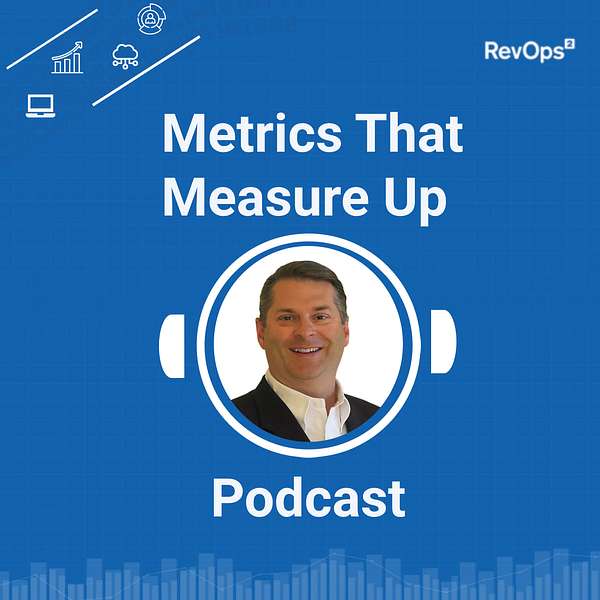
Metrics that Measure Up
Metrics that Measure Up
Product-Led Growth - Evolution or Revolution - with Wes Bush, ProductLed
On this episode of the Metrics that Measure Up podcast we are joined by Wes Bush, founder and CEO of ProductLed.
Wes's journey to founding ProductLed and becoming a leading voice on Product-Led Growth started when he was responsible for demand generation for B2B SaaS companies. Specifically, when he led demand generation at Vidyard, they launched a new product that allowed them to evolve from "hosting videos" to providing a self-service tool that allowed end-users to quickly film, edit and share videos across email and social media channels.
This launch quickly led to over 100,000 users and eclipsed the value to Marketing Qualified Leads almost overnight.
This experience started Wes to think that there were not well-defined "playbooks" for companies to leverage as they started to evaluate and take the first steps into a Product-Led journey.
Wes shared the PLG "Layer Cake" model, which highlights the foundational elements required for any PLG program:
1. Data Layer - getting a solid product analytics infrastructure in place
2. Product Layer - gaining deep insights into the User Experience
3. Conversational Layer - when and how to interact with the user
In a sales-led motion, traditionally only sales and marketing are deeply engrained in the process and the metrics that predict outcomes. In a PLG motion, every function can benefit from having access to the product analytics to inform their decision making such as:
- How users are finding out about and then to start using a product (Marketing)
- When users are at a point of activation, that the probability of converting to a paid user or enterprise-wide license is most likely (sales)
- Where in the product on-boarding process do users start to attrite or stop using the product (products)
- What features are used in the product that most correlate to customer retention (Customer Success)
Tooling and platform infrastructure will need to evolve in Product Led companies. Specifically Wes sees a day when a platform that natively includes both product analytics information + internal outreach resource process information resides natively. Integrating product utilization information into existing CRM tools is a good short-term band-aid, but not an optimal solution long-term.
Freemium versus Free Trials each have appropriate use cases, One of the primary variables for which model to use is how long does it take to reach that "aha moment", often referred to as the "Activation Point". For products that inherently have longer journeys to achieve real user value, a freemium product may perform much better than a time-restricted free trial period.
Product Qualified Leads (PQL's) the #1 metric for the PLG motion. A critical component of the initial PQL is proven activation point(s) that predictably lead to higher conversation rates to paying customers. Another variable to consider is the ability to supplement product utilization data with Ideal Customer Profile (ICP) and Buyer Persona data to optimize both the conversion rates and validate the current understanding of the best target customer cohort(s).
Time-to-Value is another key metric to capture, and factor into both the PQL criteria, but also into the product roadmap. The "SOONER" a user can experience value, the higher returns on your PLG investment.
We wrapped up this episode with Wes providing three things to consider if you are evaluating whether PLG makes sense for your company:
1. Technology is deflationary - users want to pay less over time
2. Enterprise customer buying process is up 55% - find a way to decrease that for them
3. Product experience has become part of the buying experience
Don't "TELL" them - "SHOW" them - a key tag line in the Product-Led Growth economy!!!